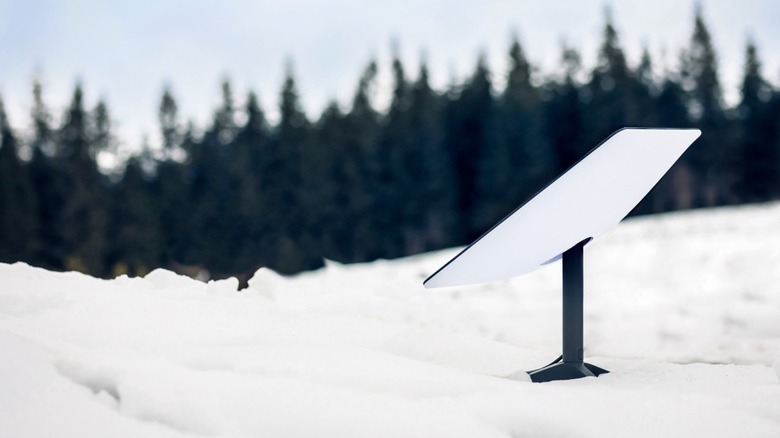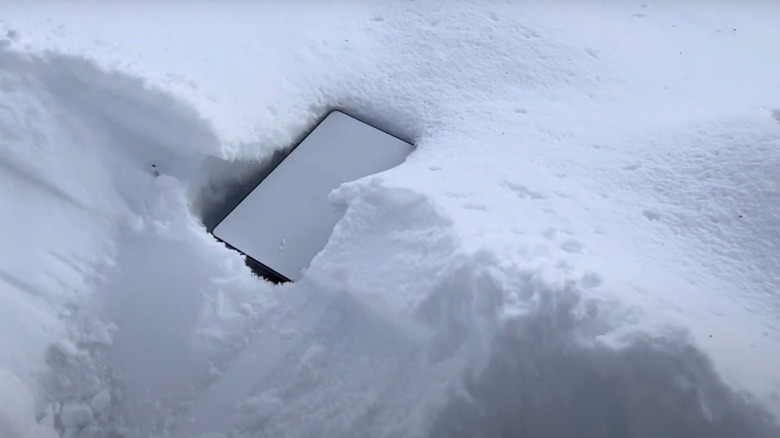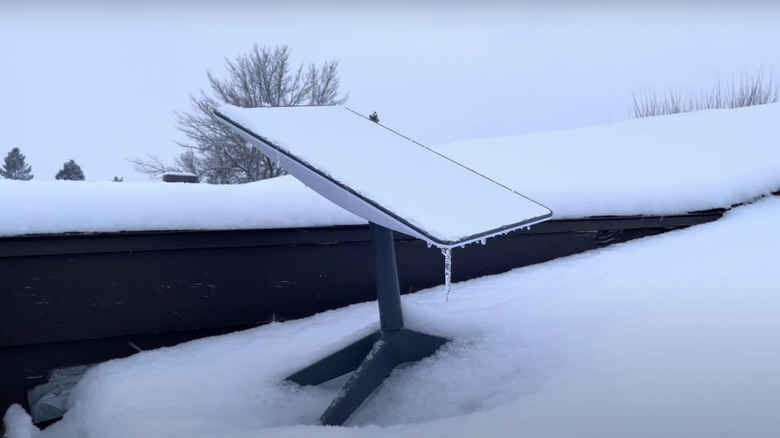What Does 'Heating' Mean On Starlink? (And Do You Need To Turn It Off?)
Starlink has changed how many access the internet, whether living in rural areas or traveling full-time in a van or camper. Even more, it comes with many features to assist with disadvantages you may find. For example, there are no contracts associated with the product, so if you're not going to be home for a month, you can easily turn the service off, which saves you money. There is also a feature called heating which works great for wintery situations you may find yourself.
In the Starlink app, under Settings then Starlink, you'll see Snow Melt — you have to be connected to Starlink to see beyond the router and dish menu. This heating feature has three options — automatic, which turns on if the device detects snow; preheat, which will keep Starlink warm to resist snow built-up; and off, which completely deactivates the snow melt mode. It is entirely up to you which mode to keep snow melt under.
Personally, I have the Starlink Standard Actuated, which is the older version of the current Starlink Standard kit, and I use it on the Roam plan as an off-grid tech essential when I'm traveling in my camper. I've seen snow melt in action and can give you a bit of insight, regarding how well the heating feature works and whether it's worth having on in the first place.
How well does heating mode work?
According to its website, Starlink is designed to work in all types of weather — though, it can't handle extreme forces of nature like hurricanes, tornadoes, meteors, and dinosaurs (the site really says that). When it comes to heating the dish, at the first signs of obstructions due to snow, the heating pad will start to work and melt off snow as quickly as it can. However, be aware that in times of extreme cold or heat, you may experience a bit of lagging. Starlink can handle anywhere between -22 and 122 degrees Fahrenheit.
YouTube channel Riverside Homestead Life gives a clear indication of how well Starlink's heating element works. In his video, he walks out to his grounded Starlink hiding in a bank of fresh snow, but there is space around the dish where the snow had continuously melted. Furthermore, there is no snow on top of the Starlink pad due to the snow melt feature. I will mention that the video does not show any ice hanging off structures and the snow looks powdery, which indicates fluffy snow, which is easier to deal with than wet snow.
To back that up with my own experience, the heating element worked quickly and automatically turned off when the snow had melted. However, during freezing rain, it was more difficult to work with. Ice likes to cling to the dish, and sometimes the heating feature won't register because it can still pick up satellites through the ice — though, the service can lag because of it. This is a good time to use the preheat mode if your power source can handle it.
Should you turn off snow melt for energy preservation?
The most viable reason most people turn off snow melt is because of energy consumption. Starlink itself can use up quite a bit of power. If we're looking at the Starlink Standard specifications, it uses an average of 75 to 100 watts an hour. The Starlink Standard Actuated version uses between 50 and 75 watts. That said, Starlink's website does not indicate how many watts extra is needed for the heating feature — however, users have shared their experiences with it.
One user on Reddit showed a screenshot of the power consumption before and while using the heating component. It indicated a nearly 40 to 50 watt increase, which is no surprise considering how much power is needed for heated gadgets. Another user stated that a Starlink representative told them that it uses about 165 watts altogether to melt approximately three inches of snow. In all honesty, though, an extra 50 watts for the feature isn't too bad of a tradeoff for fast internet.
While off-road camping out in a Colorado snowstorm, I noticed a spike in the average wattage usage for that day if I had to use snow melt mode. Afterward, wattage usage returned to normal, and I never saw a need to turn off the feature completely, especially since I was working with over 3,500 watts of battery, and I turned off Starlink at night. However, if your Starlink is attached to a smaller power source, like the Jackery Explorer 1500, or you are simply energy-conscious, you can turn off the heating mode to have full control of your drawing power.


